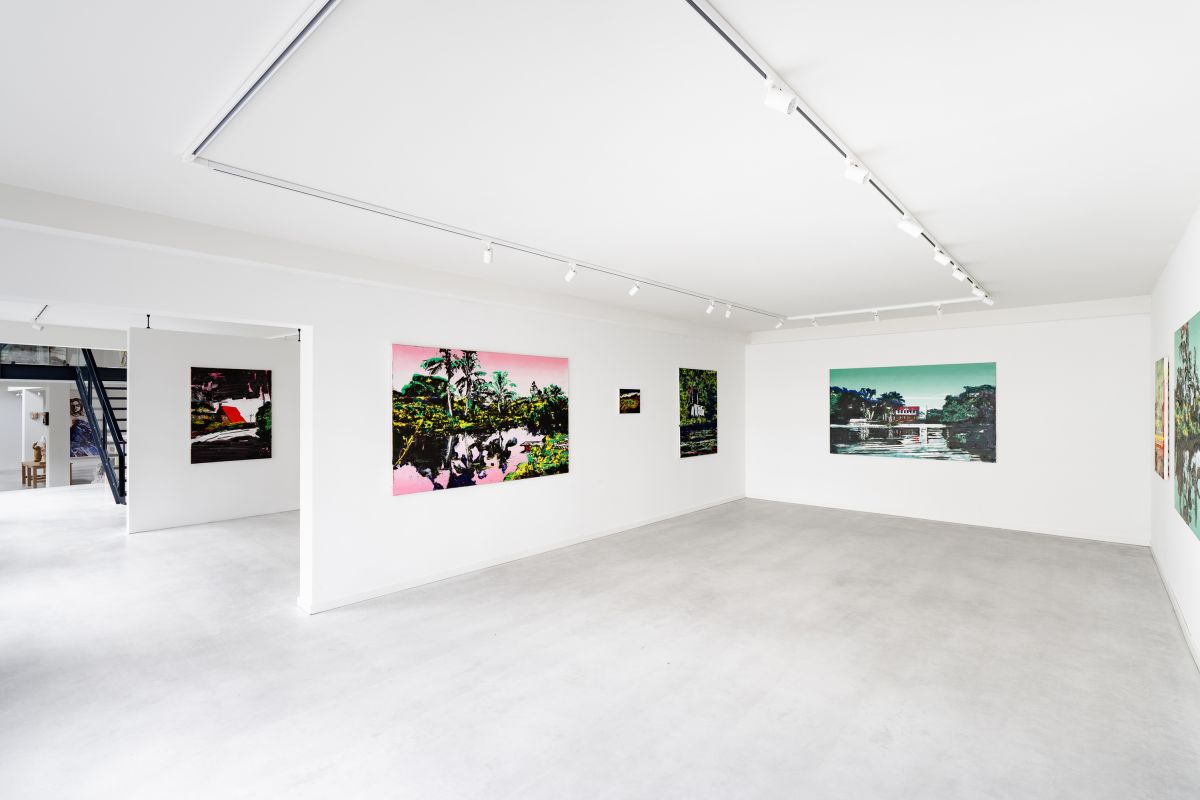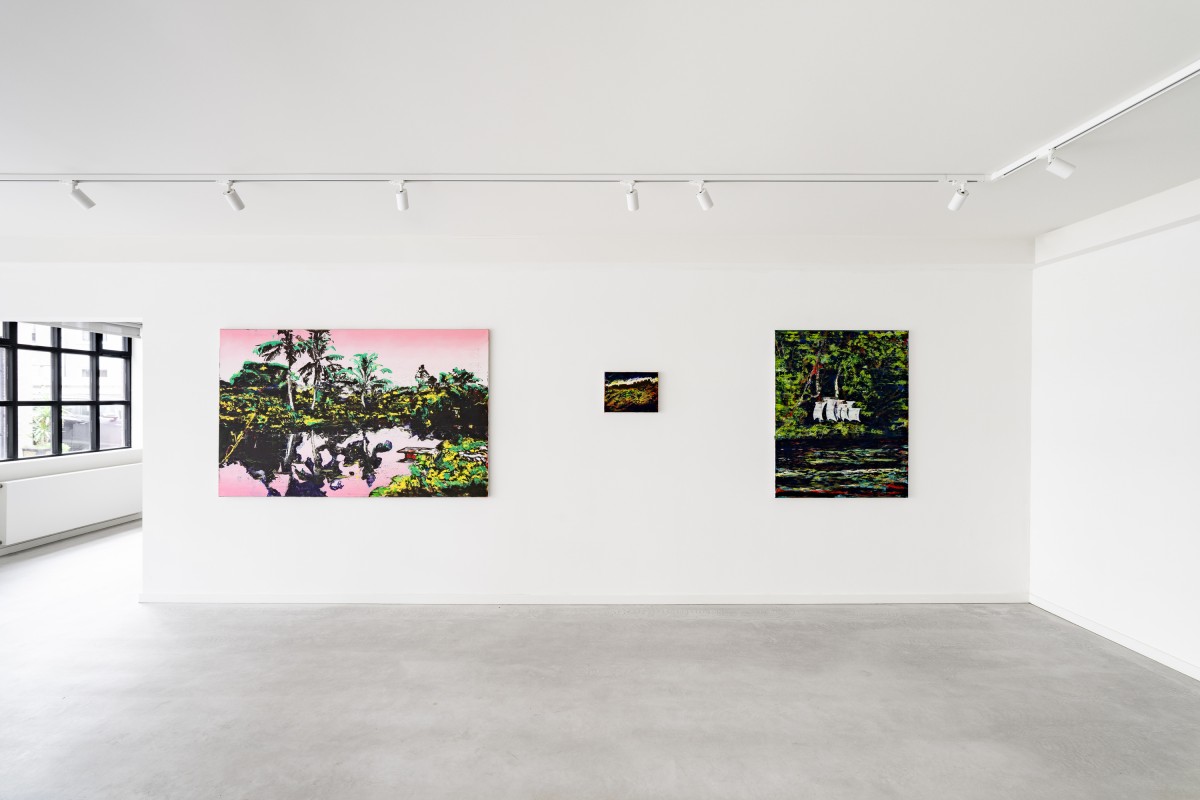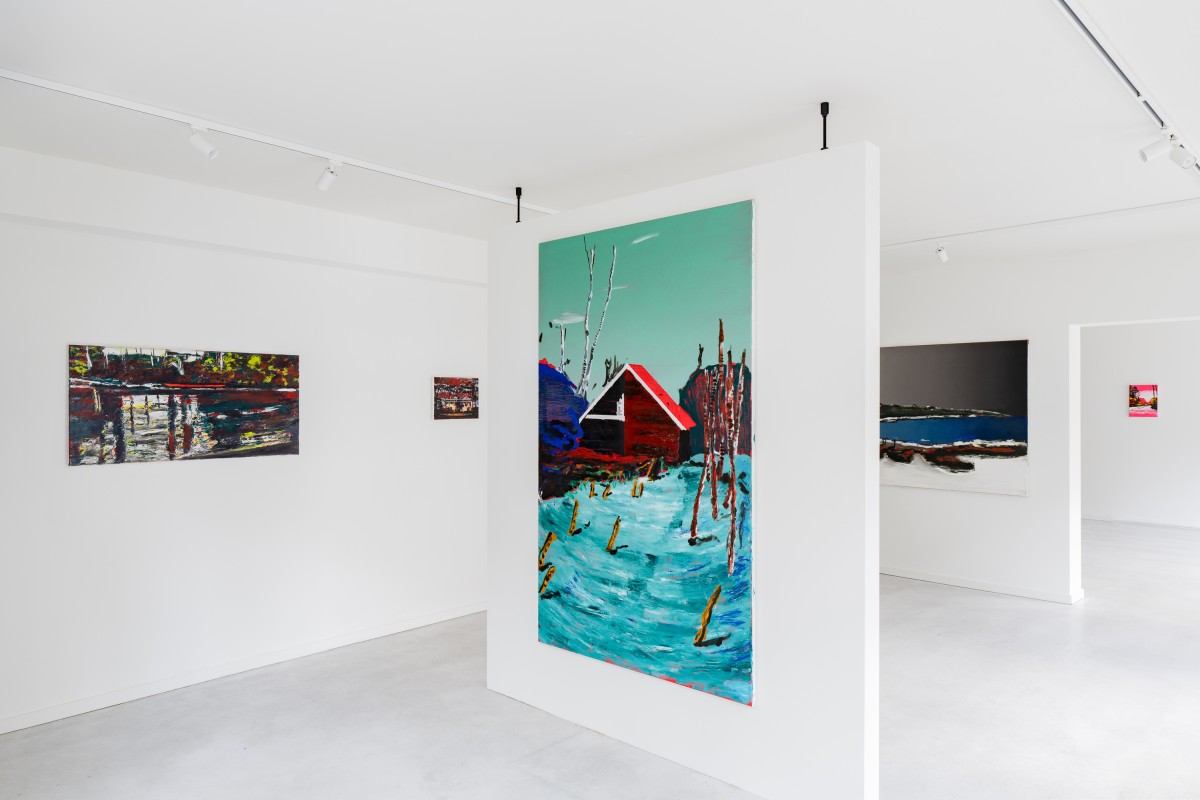hans broek | entwined landscapes

"Painting depicts the underlying layers of existence, as a silent witness to everything that is beautiful and ugly. Sometimes it is an ode, sometimes an indictment, which can be clearly expressed even without words. In my experience, there are silent and noisy paintings, just as there is cold and warm art, with many gradations in between. Hans Broek's work has temperament and is full of character. Wilma Sütö on Hans Broek
The exhibition “Interwoven Landscape” brings together landscapes and architecture from the Netherlands, Suriname and Ghana. Hans Broek's paintings explore how history has become embedded in physical spaces and how the legacy of slavery continues to influence the structures of today. By confronting the architecture of the Dutch middle class with historical locations in Suriname and Ghana, the exhibition poses a fundamental question: What does the Netherlands have to do with slavery? Although science has convincingly demonstrated the economic and social intertwining of the Netherlands with the transatlantic slave trade, that history often remains invisible in everyday life. The paintings in this exhibition make that past tangible by presenting the landscape itself as a witness.
An important focus is on the houses in Hilversum, Bussum and Kortenhoef. This region, known for its villa neighbourhoods and spacious middle-class homes, began to develop in the 1920s and 1930s and continued to grow after 1950. The architecture, often in the style of the Delft School or early modernist bungalows, reflects the economic prosperity of the post-war period. However, this prosperity was not unrelated to colonial history. The Netherlands continued to benefit from economic structures shaped by its history of slavery.
These stately houses contrast with the former slave forts in Ghana and the plantations and waterways of Upper Suriname. Here, the wooden canoes of the Maroons, descendants of enslaved people who escaped and founded autonomous communities, still sail. The canoes symbolise not only mobility and survival, but also resistance, in sharp contrast to the Dutch houses, which symbolise acquired stability and material prosperity.
Another key work in the exhibition is the Oude Kerk in Amsterdam. This monumental building, located in the heart of the city, was associated with the elite of the 17th century, including regents and merchants involved in the slave trade. Several influential Amsterdammers, such as directors of the West India Company, are buried here. During Keti Koti commemorations, the Oude Kerk is recognised as a place where the impact of the colonial past can be felt. Bible texts, such as Genesis 9:25-27, were used at the time to justify slavery.
Herengracht 502 also plays an important role in the exhibition. From 1777 onwards, this building was the seat of the Society of Suriname, which administered and exploited the colony of Suriname. Prior to that, the Society was located in Amsterdam's former city hall, now known as the Royal Palace on Dam Square. From these locations, decisions were made about plantations and the slave trade. Today, Herengracht 502 serves as the official residence of the mayor of Amsterdam, a stark contrast to its past.
The paintings in this exhibition hark back to the early 1990s, a period in which Hans Broek developed his most intuitive style. After years of experimentation, he has returned to this painting style, now enriched with a deeper layer of meaning. With “Interwoven Landscape”, the exhibition invites the viewer to take a closer look at everyday places and recognise the hidden traces of the past in the present.
About Hans Broek
Hans Broek made an international name for himself as a landscape painter in the mid-1990s. After studying in Utrecht and at the Rijksakademie in Amsterdam, he lived alternately in Los Angeles, New York and Senegal. In America, he created panoramic landscapes of California and his home city of Los Angeles, with cinematic suspense, often at night or at dusk. Later, in New York, he also painted portraits and interiors. In 2021, he impressed Museum De Pont with the results of his research into the Dutch history of slavery.



